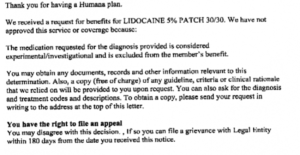Thanks to The Excellence in Mental Health Act (ExACT) passed in 2014, it’s predicted that 2016 will be a big year for Behavioral Health. As the country takes critical steps towards moving Behavioral healthcare off the back burner, demand for these services continues to grow. This will result in ample opportunity for organizations diving into Behavioral Health or BH Integration to champion the cause in 2016. But it’s important to remember that the impact of Behavioral health moves across the care continuum.
The Case for BH Integration
Behavioral health issues and diagnoses exacerbate the underlying medical problem with increases in morbidity, mortality and underlying costs in the healthcare delivery system. Promotion of Mental health and the diagnosis and treatment of mental illness in the individual and family context are integral parts of primary care. Behavioral Health Integration can help reduce the stigma and discrimination associated with mental health disorders resulting in a reduction of the stigma associated with mental health, which can in turn encourage more patients to seek care.
In addition to encouraging patients to seek care for mental health issues, primary care settings for mental health services can enhance access and ease. When care is accessed closer to home, this allows people to maintain daily activities, improving their openness to care as it doesn’t disrupt their daily routines or become more costly, if travel is normally involved.
The Hard Truth
The statistics below are powerful statements that help the entire system of care understand the importance of integrating care. Improved patient care equals better clinical outcomes but it also affects things like STAR ratings, managed care reimbursements, adherence to tighter government contract standards, and a better financial bottom line.
- Mental health issues are frequently unrecognized, and even when diagnosed, are not treated adequately.
- The Surgeon General estimates that less than 1/3 of adults with a diagnosable mental disorder receive treatment in one year.
- The National Mental Health Association (MNHA) states that only 49% of patients with clinical depression, and 52% of patients with generalized anxiety disorder are receiving treatment.
- In a national survey, 18% of the surveyed pop. with a DSM-IV diagnosis of a mental health disorder sought treatment with 52% of those visits occurring in the general medical sector (doesn’t include substance abuse issues)
- Estimates are that 11% to 36% of primary care patients have a psychiatric disorder.
Behavioral Health | The Treatment Gap
Substantial gaps in the care delivery system and the fragmentation between BH and PC can result in patients receiving inadequate or uncoordinated care. According to a recent survey conducted by the Centers for Disease Control, 956 million visits were made to physician offices (annually), of which 39 million, or 4% were for psychiatric diagnosis. Based on estimated needs of 10% of the population, there should have been 96 million psychiatric visits.
Examples of the Treatment Gap
Patients: Symptoms of mental illness may reduce a patient’s ability to initiate and follow through with treatment
Primary Care Providers: PC providers may feel uncomfortable treating patients with mental illness
BH Providers: May lack knowledge or expertise to provide medical care for their patients
Want to learn more? Join us March 30th for a free webinar where we will explore this topic in more depth! Register here:
http://bhmhealthcaresolutions.enterthemeeting.com/m/UZ3HY95M






